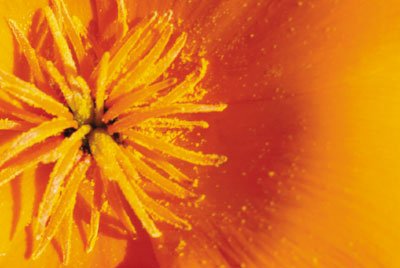By the time the sun is high in the sky, Jean Myers has been
pruning and planting for hours. Armed with shears, Myers lugged a
bucket of clippings over to three large wooden troughs. Pushing her
floppy yellow hat back, she chucked the scraps into the mounting
pile composting in the late morning sun.
By the time the sun is high in the sky, Jean Myers has been pruning and planting for hours. Armed with shears, Myers lugged a bucket of clippings over to three large wooden troughs. Pushing her floppy yellow hat back, she chucked the scraps into the mounting pile composting in the late morning sun.
Her estate, Casa Dos Rios, is named after the two creeks that quietly trickle around her property, the Uvas and Little Arthur creeks. The sprawling land is home to four acres of cabernet sauvignon vines, rows of gently swaying olive trees and a native garden that is garnering quite a bit of attention these days.
The beauty of Myers’ meticulously planned and planted garden is breath taking, a testament to the bounty California has to offer. What’s more, the garden is home to more than 180 native plant species. Chosen with painstaking care, each plant replaced a non-native, water guzzling counterpart.
The semi-formal garden surrounds the Myers family’s country estate home, both works of art that blend seamlessly to create a habitat in which people and wildlife exist in harmony.
“My goal is to work with nature, not against it,” Myers said, pointing out the gopher tunnels that sporadically broke the smooth pathway of gravel. “They go underneath and aerate.”
When Myers and her husband Greg moved into their home off Redwood Retreat Road two years ago, she dug right in – out with the old and in with the new. New being more eco-friendly and providing refuge to native species looking for a quick resting place or a cool drink. A lifelong gardener, Myers is trekking into new territory with her native garden.
“I’ve never had a native garden,” she said, “so I learn as I go.”
Jam packed with every plant and nature book under the sun, the built in bookshelves lining her study walls housed numerous bird watching books. A pair of binoculars sat on the kitchen counter. An avid bird watcher, Myers became interested in native gardening in part because of her love for birds – “they’re such crazy little creatures.” Western bluebirds, hummingbirds, swallows and chickadees frequent the property.
“Loss of habitat is the number one reason species dwindle and become extinct,” she said. “My garden provides food for all the species that fly through. If some poor little bird flies through, it can find some food before it’s on its way.”
One of the most noticeable aspects of her garden is the complete lack of the lush green lawn that so many gardeners and parks covet. Starting with different types of grasses, ferns and herbaceous perennials native to the Santa Clara Valley, such as aster, white and pink yarrow, purple needlegrass and milkweed, Myers created a sturdy canvas before planting more delicate flowers. After the grasses came the wildflowers. When sowing her native garden, she began with hardier plants and successively added more tender sprouts. The grasses act as a shield against the harsh California sunshine, providing a nest for delicate flowers to flourish.
Myers’ sparking earrings reflected glints of sunlight as she hiked up the knees of her capri pants, squatting to point out various species, the heels of her strappy, sporty sandals digging into the dirt. When making her daily rounds of the garden, she often comes across patches of plants that have been flattened during the night. Instead of flinching at the disheveled plants, she smiles.
“It’s the fox pups that come and play in my garden,” she said. “They roll all over the flowers and smush them down. It looks like sumo wrestlers have been in them.”
While many gardeners shoo the local wildlife from the gardens that have claimed so many sweat hours, Myers welcomes all creatures. That’s the point of having a native garden. “I’m happy to see the birds in my berries,” she said with a shrug. Jackrabbits come to nibble at the sprouts in her vegetable garden as ripening raspberries, tomatoes, stringbeans and bell peppers create a rainbow of color. The fragrance of herbs wafts through the warm air. Monarchs butterflies alight on the shoots of a nearby milkweed plant, their wings fluttering in the breeze. Myers hopes the beautiful species will use her garden as a breeding ground.
Born in Berkeley, Myers recently moved to Gilroy from Sunnyvale, where she said she was getting exhausted with the fast pace of living in a city. The fresh air and pristine views of Mount Madonna have been good for her well-being, the long hours of weeding good for her waistline. The noise, the cars, the pollution of the city were taking their toll not only on her, but also on the environment, she said.
“We don’t think about the impact of our actions on the future,” she said. “It’s a lot of work to be eco-friendly” – her entire home was remodeled with environmentally sound lumber and paints – “but if I manage to sustain a little bit of wildlife, I haven’t failed.”
The landscape architect who designed Myers’ garden, Michael Thilgen of Four Dimensions Landscape in Oakland, said he couldn’t agree more.
“These native gardens feel so natural,” he said. “That’s what it should be.”
These days, he’s receiving fewer calls for new lawns and more for drought-adapted plants, he said.
“People are recognizing that human activity is having a negative impact on life support systems,” he said. “They want to do something that will influence the situation for the better.”
Native plants are so beneficial because they have adapted to the regional soil composition, don’t require fertilizer – and therefore produce less pollution, require less water than impractical, lush green lawns, and provide a home for the local wildlife.
“We want to reestablish the economic health of our region by reintroducing species that are native to this place,” he said. “Traditional gardening has in many ways been hard on nature. A mosaic starts to emerge when native plants are growing where they used to, supporting animals that naturally belong.”
Although the start up efforts of investing in an eco-friendly home and environment may add up, the rewards are endless, Myers said. The range of costs runs the gamut, Thilgen said, depending on which plant species a gardener is hoping to include.
“It depends on how far from the mainstream you want to go,” he said. “There’s a big range of costs.” But maintenance costs run “quite low.”
“You put the right plant in the right place and it starts to grow,” he said. “They don’t need a lot of coddling, a lot of encouragement. They’re used to running on sunlight and the nutrients naturally present in the soil.”
Native plants are actually easier to keep, Myers and Thilgen pointed out, and don’t require fertilizer or excessive water. The water that keeps Myers’ plants perky comes from an emitter system that is activated by prompts from a weather system located on the property, only supplying the necessary amount of moisture.
“Cities should use them more,” she said of native gardens.
This year, Myers’ garden is the only South County property that will be showcased as part of the Going Native Garden Tour, a free, self-guided tour of home gardens that are water-wise, low maintenance and eco-friendly. The tour aims to educate Californians about the native plants that can flourish without robbing the soil of nutrients and sucking up water.
“We want more people to use natives in their garden,” Myers said, watching the Monarchs. “I’m always spouting off about being real eco-friendly. It’s become a real obsession.”















